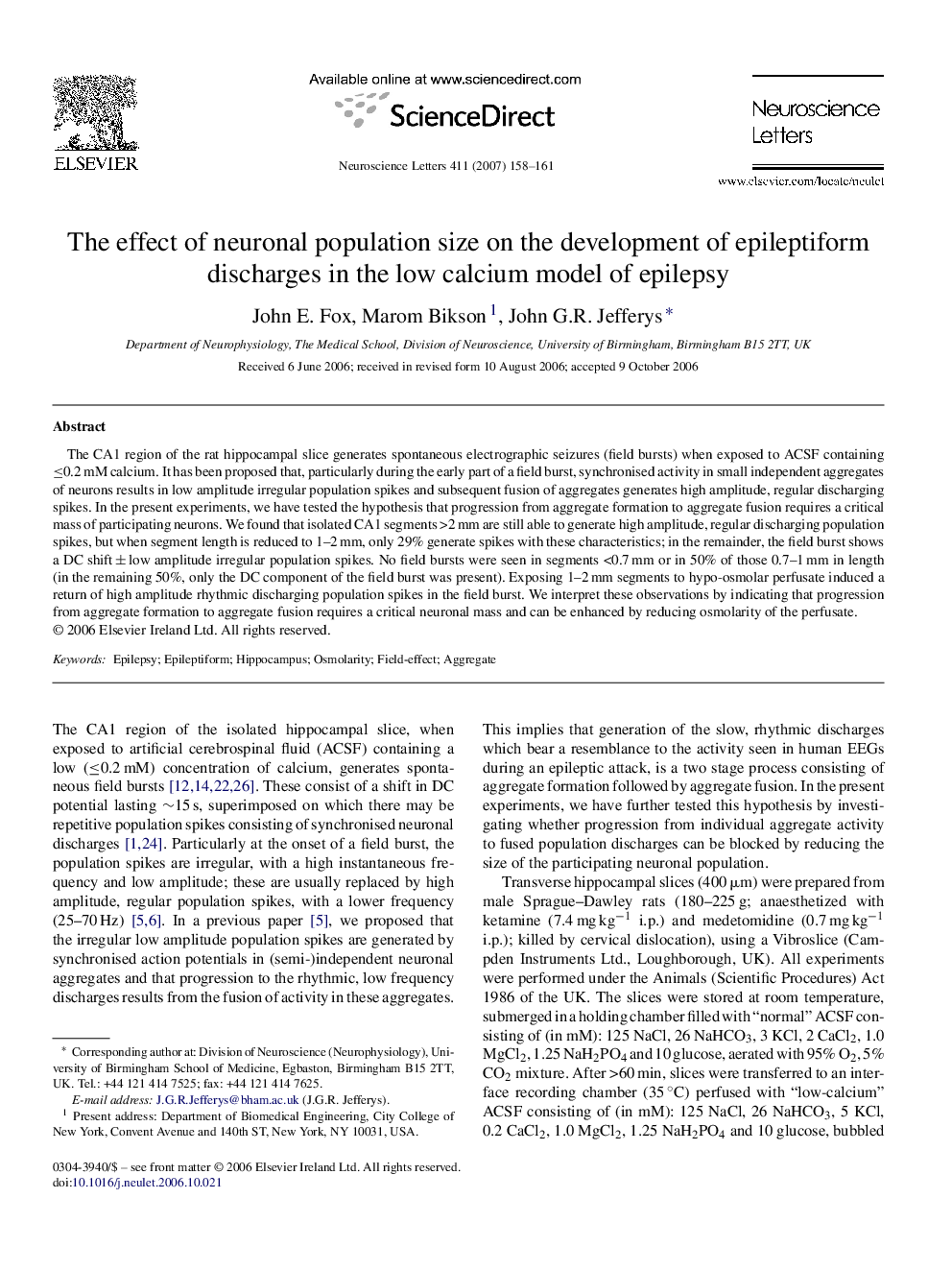| Article ID | Journal | Published Year | Pages | File Type |
|---|---|---|---|---|
| 4350024 | Neuroscience Letters | 2007 | 4 Pages |
The CA1 region of the rat hippocampal slice generates spontaneous electrographic seizures (field bursts) when exposed to ACSF containing ≤0.2 mM calcium. It has been proposed that, particularly during the early part of a field burst, synchronised activity in small independent aggregates of neurons results in low amplitude irregular population spikes and subsequent fusion of aggregates generates high amplitude, regular discharging spikes. In the present experiments, we have tested the hypothesis that progression from aggregate formation to aggregate fusion requires a critical mass of participating neurons. We found that isolated CA1 segments >2 mm are still able to generate high amplitude, regular discharging population spikes, but when segment length is reduced to 1–2 mm, only 29% generate spikes with these characteristics; in the remainder, the field burst shows a DC shift ± low amplitude irregular population spikes. No field bursts were seen in segments <0.7 mm or in 50% of those 0.7–1 mm in length (in the remaining 50%, only the DC component of the field burst was present). Exposing 1–2 mm segments to hypo-osmolar perfusate induced a return of high amplitude rhythmic discharging population spikes in the field burst. We interpret these observations by indicating that progression from aggregate formation to aggregate fusion requires a critical neuronal mass and can be enhanced by reducing osmolarity of the perfusate.
